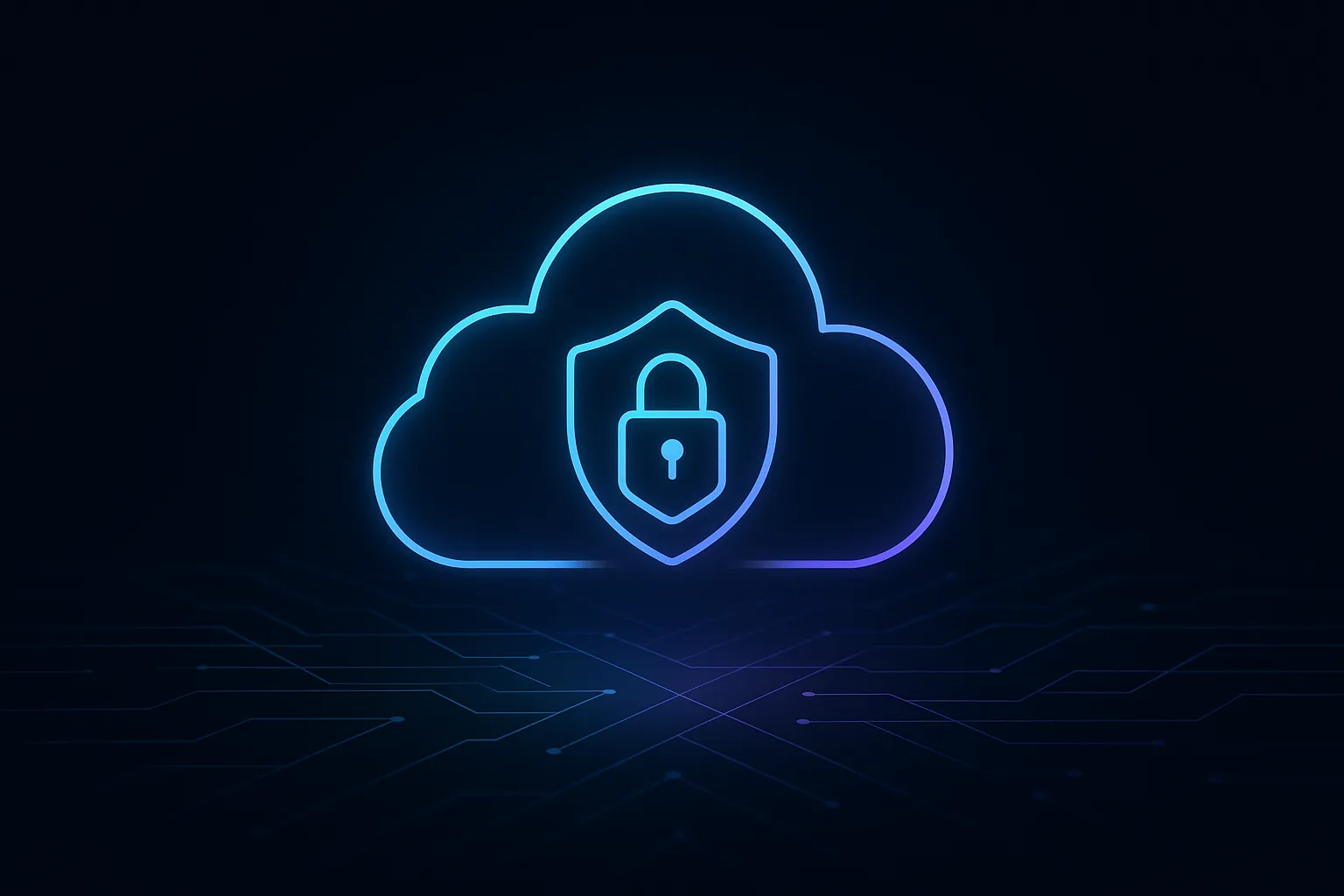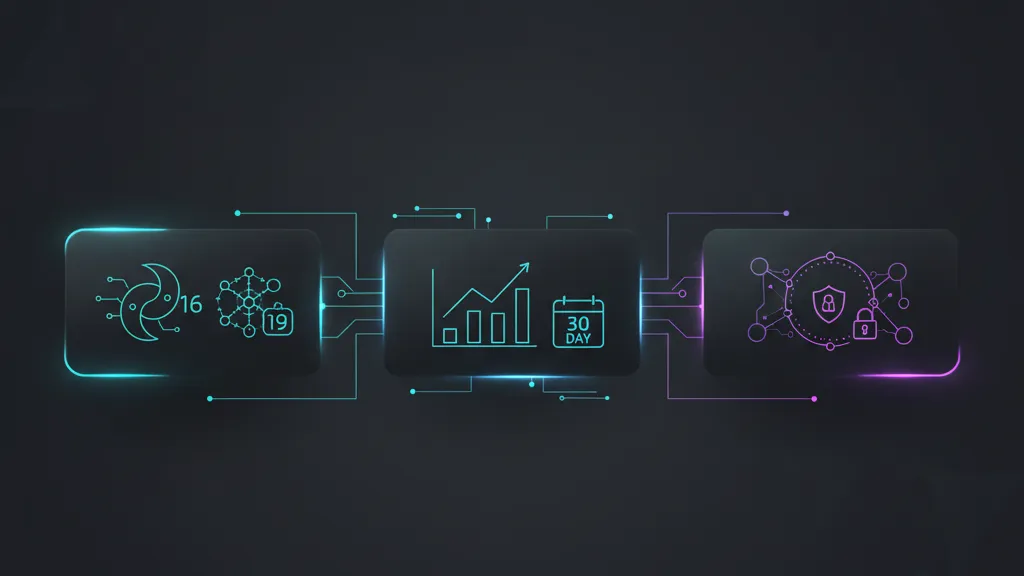To be totally straightforward, nothing ruins an otherwise excellent quarter like a security breach. I have observed teams work late into the night not to add fresh functionality, but to fix a misconfigured bucket or a leaked file. The public internet is where the greatest advancement transpires in 2025. It lets you launch faster, costs less upfront, and reach people all over the world. But it's also where oversights scale quickly. The positive aspect is that a practical, layered approach can make your secure cloud environment stronger than most on-prem setups without slowing you down.
This resource is for founders and service providers who are past the hype and want real, up-to-date ways to secure their cloud in 2025, ensure their IAM prevents lateral movement, and leverage cloud compliance to unlock business deals instead of slowing sales. Think of it as a playbook for decision-makers.

Start with the Shared Responsibility Model and Take Ownership
AWS, Azure, and Google Cloud all use a shared responsibility model. They secure the cloud, including physical data centers and core services. You secure what you build in the cloud—apps, data, identities, and configurations. Most incidents happen because customers misconfigure resources, over-permit roles, or mishandle secrets.
Actionable step: define who manages what. Create a single page mapping owners to controls—encryption, logging, incident response. No ambiguity. No “I thought they had it.” This reduces risk and accelerates audits.
Encrypt Everything: Data in Transit, at Rest, and in Use
Encryption is a must, but details matter. Use managed key services (KMS) with customer-managed keys for sensitive data. Enforce TLS 1.2+ everywhere, including internal service-to-service traffic. For high-risk workloads, consider confidential computing to protect data even during processing.
Steps to Strengthen Encryption
- Default to provider encryption at rest; upgrade critical stores to CMKs with key rotation and access policies.
- Terminate TLS at trusted boundaries only; require modern ciphers and mutual TLS for service mesh communication.
- Log every key access and alert on unusual KMS activity or failed decrypt attempts.
- Document data classification so teams know what must use CMKs vs. provider-managed keys.
IAM: Least Privilege or Bust
If an attacker can’t assume a role, they can’t do damage. That’s why IAM is the strongest control. Move from broad, human-centric access to fine-grained, role-based, automated permissions.
Core IAM Patterns for 2025
- Least privilege by default: start with deny-all, allow only what’s needed for the workload, and review quarterly.
- Short-lived credentials: use identity federation and temporary tokens. Never hardcode long-lived keys.
- Separation of duties: production access requires peer approval and is time-bound; most engineers have read-only access.
- Service identities: workloads authenticate as themselves instead of shared secrets.
At BYBOWU, we refactor legacy IAM into clear, auditable policies that reduce blast radius and pass enterprise security reviews without slowing your roadmap.
Zero Trust & Segmentation: Modern Network Security
Perimeter firewalls aren’t enough. Assume the network is hostile. Verify explicitly at every hop. Segment aggressively: separate production from staging, public services from private data stores, and sensitive workloads from general compute.
Network Guardrails That Work
- Private subnets for data/internal services; public subnets only for edge endpoints.
- Security groups with allow-lists, not broad ranges.
- Private service endpoints to managed databases and storage; avoid public egress when possible.
- Web Application Firewalls (WAF) with bot mitigation and DDoS protection at the edge.
Secrets Management & Secure SDLC
Plaintext secrets in repos remain a top cause of incidents. Centralize secrets in a managed vault, rotate them automatically, and integrate with CI/CD. Combine this with a secure SDLC so vulnerabilities are caught before production.
Developer-Friendly, Secure by Default
- Use a secrets manager (not env files) with automatic rotation and fine-grained access.
- Shift-left: static analysis, dependency scanning, container scanning on every PR.
- Sign and attest artifacts; only deploy verified images from trusted registries.
- Require code review for security-sensitive changes (IAM, network, encryption).
Observability, Logging & Threat Detection
You can’t defend what you can’t see. Aggregate logs (API calls, auth events, network flows, DB access) in a central lake. Enable managed threat detection (CSPM/CWPP) to spot misconfigurations and anomalies before attackers do.
From Noise to Signal
- Immutable, tamper-evident logs with lifecycle policies and cost-aware storage.
- High-fidelity alerts: root logins, policy changes, failed decrypts, public resource creation.
- Quarterly tabletop exercises so teams know how to respond when alerts fire.
Side effect founders love: cleaner logs and faster audits reduce total cost of ownership.
Compliance That Boosts Sales
Enterprise buyers expect proof. Frameworks like SOC 2, ISO 27001, HIPAA, and GDPR aren’t just overhead—they’re revenue enablers when implemented strategically. Map controls once, automate evidence collection, reuse everywhere.
Make Compliance Your Advantage
- Create a single control library across frameworks to avoid duplication.
- Automate evidence collection from cloud APIs: patch baselines, IAM diffs, encryption status.
- Policy-as-code enforces data residency and retention rules.
Aligning technical controls with buyer questionnaires up front can accelerate enterprise deals and save weeks of back-and-forth.
Cost-Aware Security: Stronger Posture, Smarter Spend
Security doesn’t have to break the bank. Use native controls first, reserve premium tools where ROI is clear. Consolidate agents, tune alerts to reduce SOC fatigue, and right-size log retention based on risk and regulatory requirements.
- Tier controls: must-have (MFA, IAM, encryption) vs. nice-to-have (advanced threat intel).
- Leverage serverless and managed services to reduce patching and exposure.
- Use policy-as-code for reusable guardrails across environments.
Your 12-Point Cloud Security Checklist for 2025
- Document shared responsibility model with owners per control.
- Classify data; encrypt at rest with CMKs; enforce TLS everywhere.
- Implement least-privilege IAM with temporary credentials and reviews.
- Segment networks: private subnets, WAF/DDoS at the edge.
- Centralize secrets; auto-rotate; remove hard-coded keys.
- Shift-left security: SAST, SCA, container scanning, artifact signing.
- Enable CSPM/CWPP; auto-remediate critical misconfigurations.
- Aggregate, protect, and alert on logs for high-signal anomalies.
- Harden endpoints/base images; patch regularly.
- Test backups and DR quarterly; define RPO/RTO.
- Vendor/third-party risk program; least-privilege integrations.
- Automate compliance: control mapping and evidence pipelines.

How BYBOWU Can Help You Get There Quickly
We are builders at heart. We've been in the war room at 2 a.m., and we've also helped teams prevent fire drills entirely. Our approach combines modern architecture (Next.js, React Native, Laravel) with AI-powered monitoring and policy-as-code guardrails so your team ships safely and quickly.
What an Engagement Looks Like
- Security posture audit: 2–3 weeks to baseline IAM, network, data, and pipeline risks with prioritized fixes.
- Implementation sprints: deploy encryption standards, least-privilege IAM, secrets management, logging pipelines.
- Compliance by design: map controls to SOC 2/ISO and automate evidence from day one.
- Enablement: playbooks, runbooks, and engineer training so your team owns the future.
See results in our portfolio or explore our services to tailor a plan to your stack.
Next Step: Use Security to Grow Your Business
Strong security is a sales story. Buyers trust you, deals close faster, and your roadmap stays on track. If you’re ready to transform “we should fix that” into “we’ve got this,” we can help.
Secure your cloud. Request a free security consultation today!
Prefer email? Contact us at [email protected].





Comments
Be the first to comment.